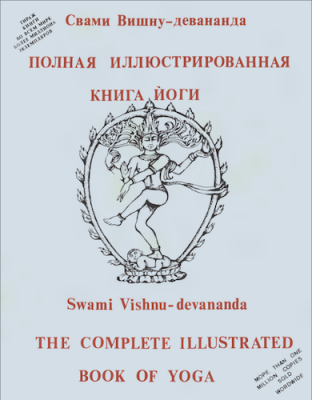The Russian Yoga Journal decided to write about home altars of yoga teachers in Moscow. It also covers my small altar.
Interview: Maxim Kirichenko.
Home altar

- How did you make home altar?
In 1995 I started to practice yoga at the Indian embassy in Moscow. Yogacharya Jayakumar Swamishree from Mysore made his classes there. He taught not only asana, but also pranayama and mantras . It was quite traditional Indian approach, Purna Yoga. I liked the Indian philosophy, traditional music, bhajans. I remember my first audio-cassette with Indian bhajans. I bought it in the esoteric shop at the Roerich Museum in Moscow. On the paper inside cassette box was printed «Jai Shiva!». No more information. I could not figure out who was singing, but I digitized the record from tape , and sometimes I play it on my classes. My first homemade altar was a book of Swami Vishnudevananda (Swami Sivananda disciple) «The Complete Illustrated Book of Yoga» which first Russian edition has a picture of Shiva Nataraj on the cover. I loved this picture.

- What does it mean for you? What is the home altar used for?
Altar is traditionally used for rituals of bhakti yoga. You can make a small home puja in front of it, pray to Gods. I do not practice ritual yoga (puja, yajna) regularly. My practice is more internal – mudras, bandhas, pranayama, meditation. So I use altar to harmonize the space. Sometimes I light a fragrance stick in the morning, recite the mantras. Home altar reminds a yoga practitioner that life goals should not be only material comforts and good body-shape, but timeless — like self-realization, connection with the Supreme Soul, sharing knowledge of yoga in the footsteps of great teachers (if you are yogateacher). It ennobles.
- What do you never put on the altar?
You should put on the altar images and symbols that really mean something for you in a spiritual way. You don’t need to put anything else — it’s not an art installation. However, there are no strict rules about the altar’s objects even in traditional Hinduism. The Indian spiritual tradition supports pluralism and broadmindedness. I’ve seen altars of numerous styles in India. Pujas have more strict rules — they must be arranged according to traditional regulations.
- Tell us about the objects of your altar.
On the photo of my altar you can see: The image of my teacher of Kriya Yoga from Govardhan, India — Shri Shailendra Sharma. Also, the picture of Babaji — a great yogi, who gave Lahiri Mahasaya, the founder of the modern line of Kriya Yoga, the ancient practice and asked to spread it (more information can be found in the famous book of Yogananda’s «Autobiography of a Yogi»). In the center stands the Shiva Nataraja («Cosmic Dancer, the King of Dance») — the original of this sculpture is in the temple of Chidambaram in Tamil Nadu, in Southern India. Yogis worship Shiva as Mahadeva («God of Gods») and the first original teacher of yoga. There is also an image of Shiva in Padmasana — pose for meditation. There is a picture of Ganesha — the God who removes obstacles, the son of Shiva and Parvati. You can see the photo of the 12th century sculpture of Ganesha, in the temple at Gokarna, Karnataka, on the South of India too. A pair of traditional magic diagrams – yantras, made of thin copper plates. There are yantras of Shiva and Lakshmi — the goddess of fortune. They are from the temple Kalahasti, Andhra Pradesh. Beads from seeds of Himalayan Rudraksha tree — they are used for chanting mantras (japa yoga) to Shiva, Ganesha, Shakti. On the copper plate with a swastika (Vedic symbol of the sun and well-being) you can see the collection of stones from powerful places around the world — from the Himalayas to the shores of Lake Baikal, the wild bays of the Mediterranean, the lava from the volcanoes of Kamchatka and the black coastal cliffs of Gokarna and so on. There are also a couple of Shiva’s tridents — trident symbolizes Shakti, the feminine energy of the Universe. If it was not, Siva would not get out of samadhi, and life would be boring. The crystal symbolizes the vision of subtle spheres and beings. The black stone in elliptical form is a Narmadeshwar extracted from the waters of the Narmada River in Central India. Such stones are most favorable for installation as Shivalinga — object for puja to Lord Shiva. We have not set it in a proper ritual way. We brought it from Omkareshwar in 2007 and now it is waiting for the time when we will have opportunity to build a yoga ashram in a strong place somewhere in countryside.

Horn of bull — horns is used for puja to Lord Shiva. Because according to the legend Shiva rides the bull Nandi. Also, there is a ball of solid mercury (Ayurvedic proceed according Siddh’s tradition, such mercury is not toxic). You can also see here the ashes of the ritual fireplace (dhuni) of my Guru, Indian silver bracelet in a form of a cobra — a symbol of kundalini energy and the Time, «devourer of worlds «. It is heavy and I rarely wear this bracelet. So, probably it isn’t the most feature-rich altar, but for me it’s enough.
October 2015